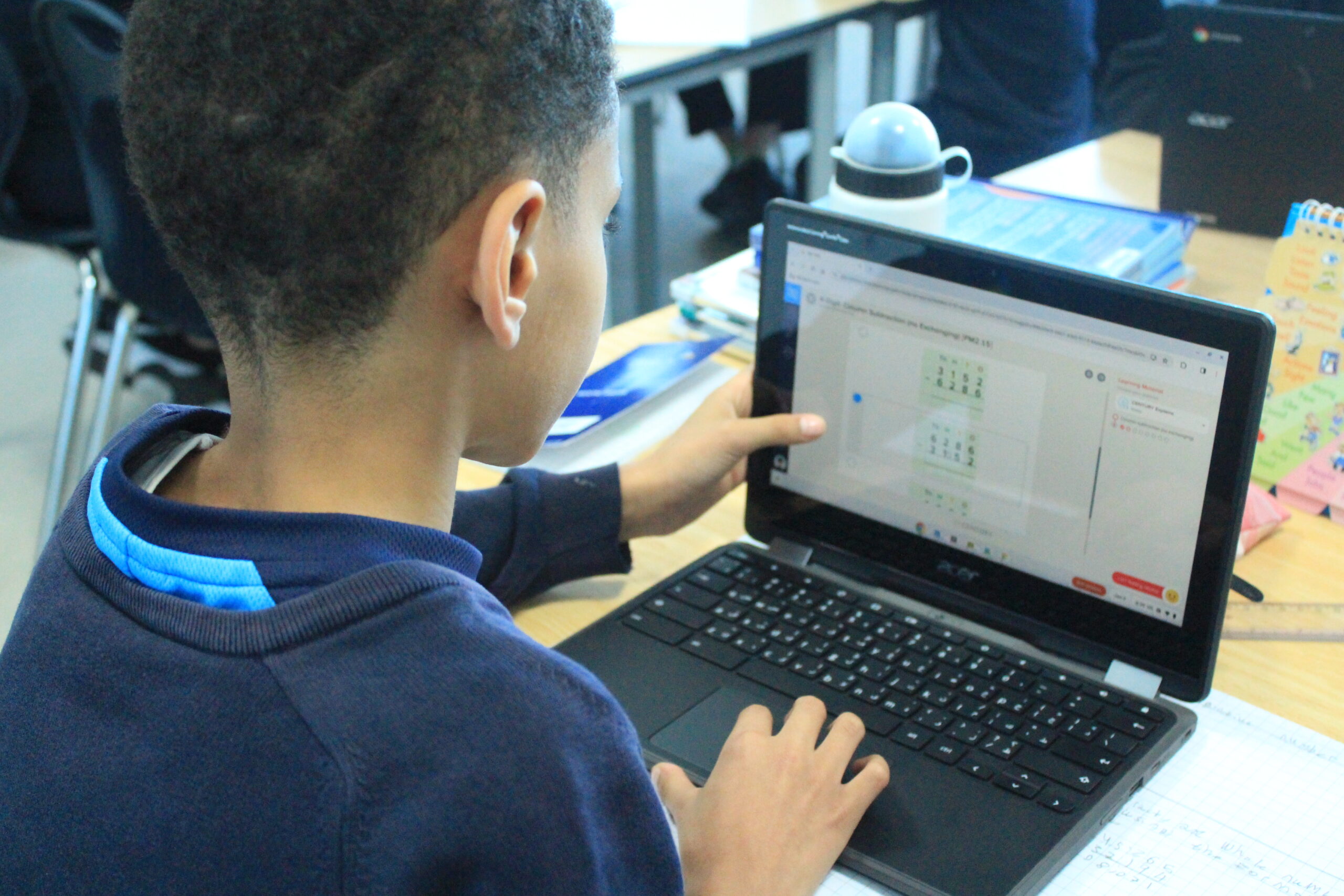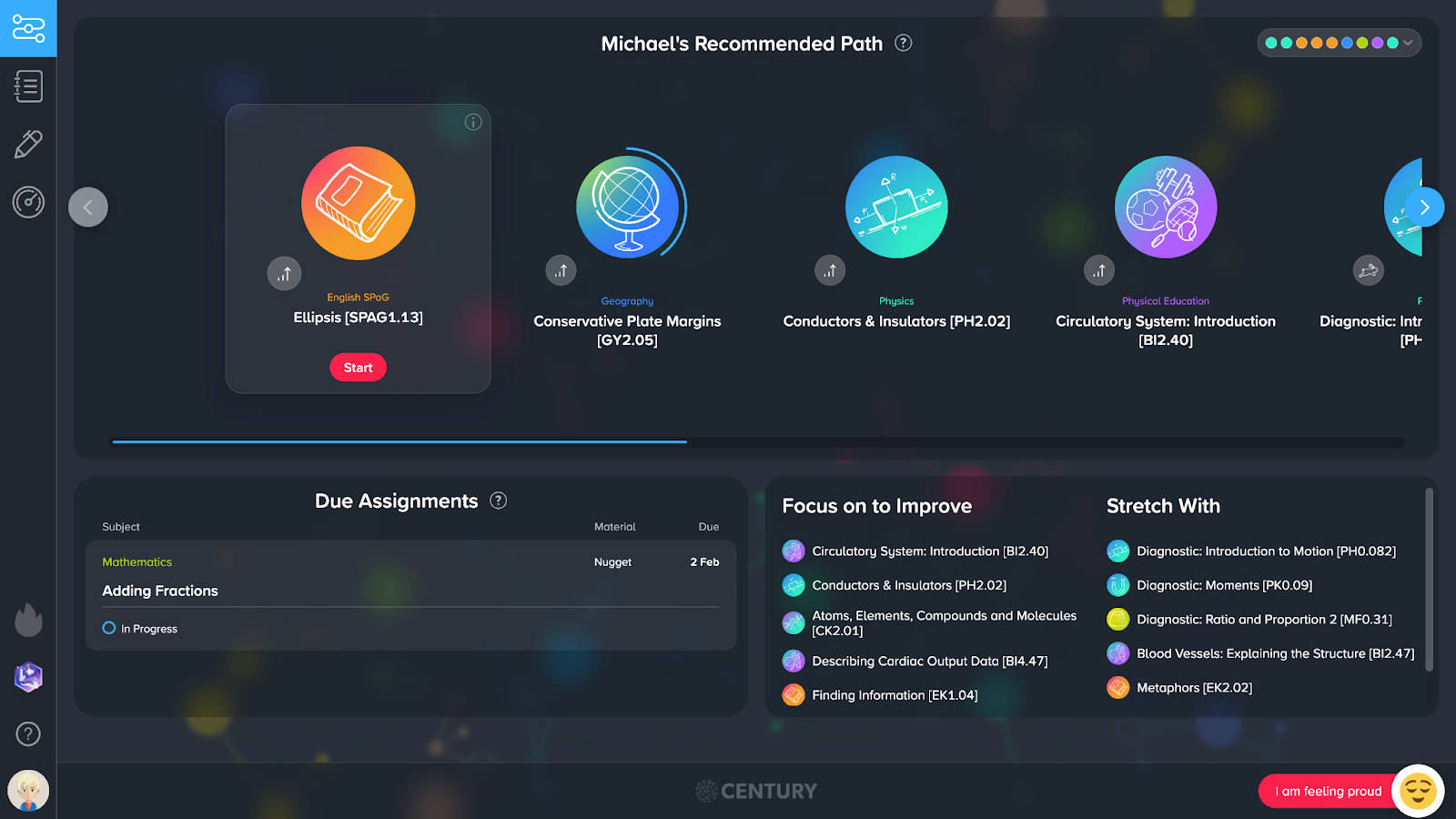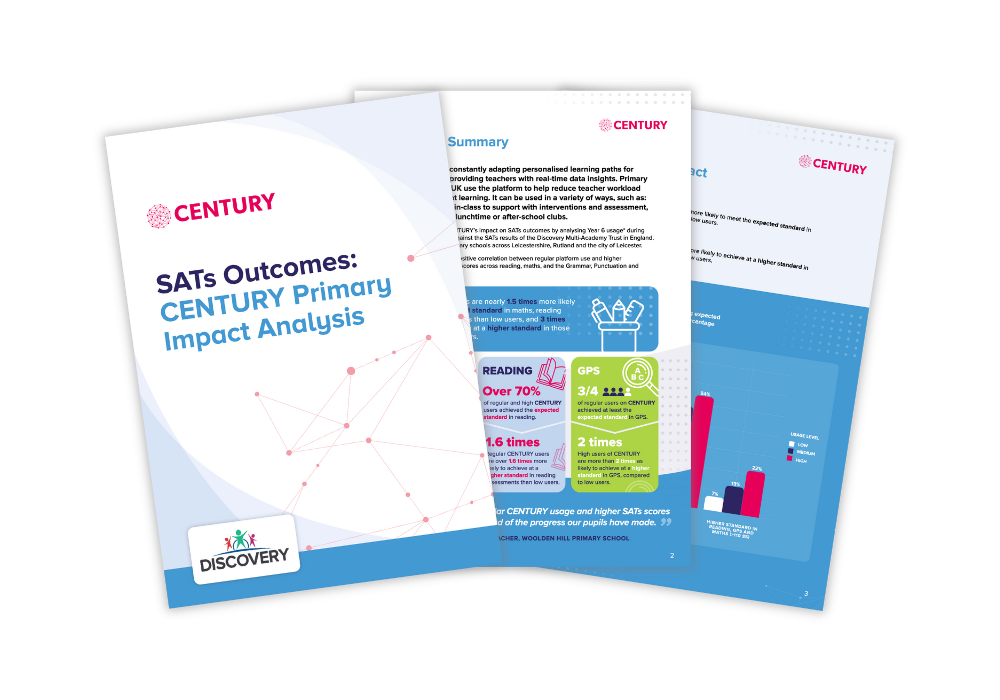Driving attainment with CENTURY at Reach British School
Estimated reading time: 4 minutes

Reach British School, part of International Schools Partnership, a leading international schools provider, is one of the top schools in Abu Dhabi. Catering for children from ages 3 to 18, Reach offers an affordable British education through the National Curriculum for England; its academic and cultural rigour challenges students to excel in both their studies and personal growth. We spoke to principal Craig Halsall about how CENTURY has been able to fit with the school’s ethos of prioritising student learning and their goal of increasing attainment.
What made you choose CENTURY?
I’ve had experience of CENTURY in my previous school and was aware of it as a teaching tool, but after some serious analysis of our school assessment data we’ve identified an attainment gap that we wanted to close quickly. And we felt that the CENTURY model that uses adaptive assessment to determine a student’s personalised learning pathway based on their knowledge gaps will be a key to achieving this. The fact that the assessment data also can inform teaching, together with the AI component, reinforced our belief that CENTURY would add significant value in speeding up closing any attainment gaps for students.
In our school we try to make sure that students understand that we are serious about their learning, we are ambitious about their learning. And the CENTURY model does a very good job of focusing students on that.
How did you find the onboarding process?
Our first conversation with CENTURY about onboarding took place before the summer break. We offered the tool to our students and parents to explore over the holidays, which worked well.
We also had our deputy heads spearhead the use of CENTURY across primary and secondary schools, which has really helped the implementation process. They’re responsible for ensuring that the system is used effectively, now that it’s been implemented and is in line with our shared school drivers and our expectations for usage, student outcomes and attainment.
What are those shared school drivers?
We’ve very carefully selected what we refer to as “drivers”, not values, mission or vision. These are the three aspects of our school that drive every conversation, every decision and every part of the budget.
One, we want our students to be safe. Two, we want to drive a culture of respect within the school.
Three, we want students and staff to be ambitious for themselves and for others. We felt that CENTURY fitted all three. With safety, we felt that it provides a good safeguarding experience. It’s a controlled environment, we know what is in there, we know that it’s not subject to advertisement, we know that we can control communications. And we know that it’s about student learning.
Not having advertising is also about respect, respect for the fact that we are a learning first organisation. And if we’re going to put the learning process first then we don’t want any distractions to it.
And thirdly, we really want all of our students to improve their learning outcomes by adding real value to the education offering that we already have in place. We felt that CENTURY would be something that would add serious value in terms of encouraging students to reach their aspirational learning outcomes. Having trialled CENTURY with four classes for a couple of months before the final decision to invest in it, we found without question that all students across those four classes made more progress than equivalent students that were not exposed to CENTURY.
How did you measure progress during the initial pilot?
We have our own internal assessment processes to measure student progress. We used those to look at the progress the students made in the prior six months and the two months of the pilot. We then looked at the amount of CENTURY usage and mapped the rate of improvement against it, and we could see there was a direct correlation between improved usage and enhanced progress.
What are your plans for CENTURY going forward?
Our vision is to grow CENTURY in English and science over the next few months.
The next 6 to 12 months will be important for us to understand how to map CENTURY data against other data forms. For example, one of the biggest ways that I see CENTURY assessment data being used is to map it against GL PASS data. GL PASS data is a deep dive on student wellbeing and how students feel about their learning, school and teachers. I want to see how that can help support us in understanding where CENTURY can be used for intervention where children are not feeling that they’re connecting with their learning on a level they’re comfortable with. Maybe a deliberate enhanced usage of CENTURY may help individual children to feel better about their learning.
I am also excited about CENTURY being used for homework, because we expect a lot of our teachers here, and if we’re not careful it can and does take a toll on teacher wellbeing. Marking for the sake of policy, that doesn’t have an impact on learning outcomes, is not the direction of travel for us. So using CENTURY to help with homework is a very good move for us.
Ultimately, we want this to contribute to an increase in attainment, so that at our next inspection we can improve inspection outcomes both locally and internationally.
Find out more about how you can integrate CENTURY into your classroom here. Book a demo here.
CENTURY in the news
View all News
-

Blog
10th July 2025
The Science Behind CENTURY
In this blog post, Tom Thacker, Chief Education Officer at CENTURY, refers to Prof. Dr. Carl Hendrick's recently published guide into the science behind learning. Tom summarises the science behind learning and explains how and where this has been applied…
Read more
-

Blog
10th July 2025
CENTURY Tech report reveals significant positive impact of AI-powered learning on…
CENTURY Tech, the award-winning AI-powered teaching and learning platform, today announced the publication of its latest impact analysis report, demonstrating a strong positive correlation between regular use of the CENTURY platform and higher Key Stage 2 SATs results.
Read more